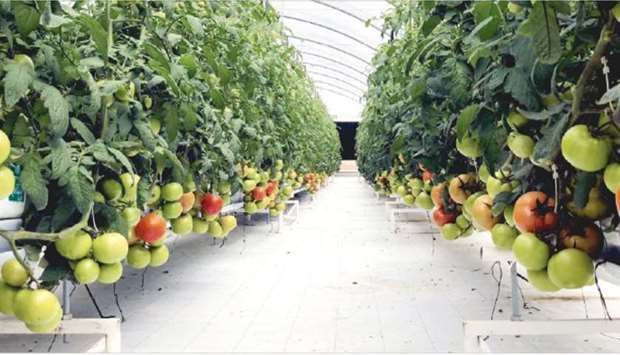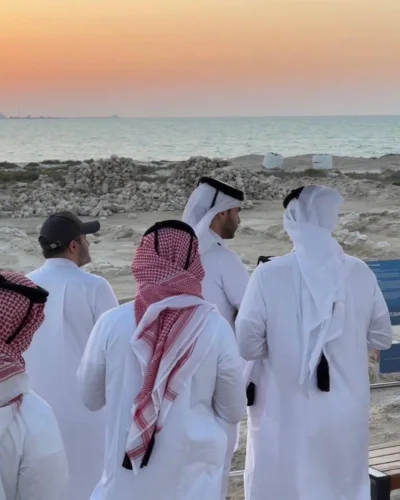Qatar has witnessed increased reuse of treated wastewater for agricultural purposes in July on an annualised basis, indicating the country's commitment towards sustainability.
Qatar’s treated wastewater stood at 21.42mn cubic metres out of 21.84mn cubic metres of wastewater received in July this year, the PSA said. The treated wastewater saw 1.7% and 1.1% growth year-on-year and month-on-month respectively in the review period.
The treated wastewater reused for agriculture witnessed a 17.7% year-on-year growth to 7.33mn cubic metres, which accounted for more than 34% of the total treated wastewater. On yearly basis, the reuse of treated wastewater for agriculture saw a 1.1% jump in July 2022.
Qatar Environment and Energy Research Institute, part of Hamad Bin Khalifa University, has developed a seawater desalination pilot plant which is showing higher efficiency than conventional technology – both in energy recovery to reduce thermal energy consumption, and cost effectiveness.
The agriculture sector has been receiving increased thrust and support of the sovereign as part of the self-sustaining initiatives.
Qatar plans to achieve 70% self-sufficiency in the production of certain vegetables by 2023 but water resource remains a major concern to sustainably continue its journey, Dr Sa’d Abdel-Halim Shannak, a scientist at Qatar Environment and Energy Research Institute, had said recently.
“Maximising use of treated wastewater and pricing reform,” he said.
The treated wastewater reused in irrigation of green spaces amounted to 10.96mn cubic metres, which accounted for more than 50% of the total treated wastewater this July.
The reuse of treated wastewater in irrigation of green spaces witnessed a 0.6% yearly increase but saw a 4.2% plunge on yearly basis in the review period.
The treated wastewater reused in deep injection into aquifers stood at 2.23mn cubic metres, but registering 26.1% and 2.4% decline year-on-year and month-on-month respectively in August 2022. Such reuse accounted for more than 10% of the total treated wastewater in the review period.
A large quantity of treated wastewater – up to 40% – which at certain times of the year – is either discharged to lagoons or injected to the deep aquifers, Dr Shannak said.
The treated wastewater discharged into lagoons in July this year stood at 1.32mn cubic metres or more than 6% of the total treated wastewater re-used. Such discharge saw a 3.4% and 61.5% surge on yearly and monthly basis respectively.
There was no discharge of treated wastewater into the sea in August 2022.
The PSA bulletin said the water produced was 58.51mn cubic metres; while consumption was 57.41mn cubic metres in the review period.
Qatar’s treated wastewater stood at 21.42mn cubic metres out of 21.84mn cubic metres of wastewater received in July this year, the PSA said. The treated wastewater saw 1.7% and 1.1% growth year-on-year and month-on-month respectively in the review period.
The treated wastewater reused for agriculture witnessed a 17.7% year-on-year growth to 7.33mn cubic metres, which accounted for more than 34% of the total treated wastewater. On yearly basis, the reuse of treated wastewater for agriculture saw a 1.1% jump in July 2022.
Qatar Environment and Energy Research Institute, part of Hamad Bin Khalifa University, has developed a seawater desalination pilot plant which is showing higher efficiency than conventional technology – both in energy recovery to reduce thermal energy consumption, and cost effectiveness.
The agriculture sector has been receiving increased thrust and support of the sovereign as part of the self-sustaining initiatives.
Qatar plans to achieve 70% self-sufficiency in the production of certain vegetables by 2023 but water resource remains a major concern to sustainably continue its journey, Dr Sa’d Abdel-Halim Shannak, a scientist at Qatar Environment and Energy Research Institute, had said recently.
“Maximising use of treated wastewater and pricing reform,” he said.
The treated wastewater reused in irrigation of green spaces amounted to 10.96mn cubic metres, which accounted for more than 50% of the total treated wastewater this July.
The reuse of treated wastewater in irrigation of green spaces witnessed a 0.6% yearly increase but saw a 4.2% plunge on yearly basis in the review period.
The treated wastewater reused in deep injection into aquifers stood at 2.23mn cubic metres, but registering 26.1% and 2.4% decline year-on-year and month-on-month respectively in August 2022. Such reuse accounted for more than 10% of the total treated wastewater in the review period.
A large quantity of treated wastewater – up to 40% – which at certain times of the year – is either discharged to lagoons or injected to the deep aquifers, Dr Shannak said.
The treated wastewater discharged into lagoons in July this year stood at 1.32mn cubic metres or more than 6% of the total treated wastewater re-used. Such discharge saw a 3.4% and 61.5% surge on yearly and monthly basis respectively.
There was no discharge of treated wastewater into the sea in August 2022.
The PSA bulletin said the water produced was 58.51mn cubic metres; while consumption was 57.41mn cubic metres in the review period.




